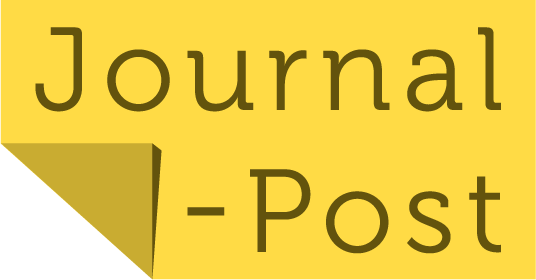The role of animals in literature
Animals have always been an integral part of human life and culture. Throughout the ages, they have been depicted in literature as both symbolic and realistic figures, bringing life, energy, and themes to stories. In this article, we will explore the importance of animals in literature. From the most famous ones, such as Moby Dick and Animal Farm to lesser-known works that use animal symbolism, we will uncover what makes animals such a powerful tool in storytelling.
Realism vs. Symbolism
Animals in literature have a dual role: they can be depicted as realistic or symbolic. Realistic portrayals of animals are often created to demonstrate the natural behavior of animals and to depict human behavior through animal perspectives. Symbolic representations of animals, on the other hand, reflect a deeper meaning beyond the surface level of realistic drawings and storytelling.
Realism is often used in literature to show the relationship between humans and animals. The portrayals of animals are similar to humans in that they are characterized by their natural habits and behaviors. For example, in the book Call of the Wild, Jack London portrays a domesticated dog who is forced to survive in the harsh wilderness of Alaska. The story highlights the cruelty of human behavior and celebrates the resiliency of nature.
Symbolism, on the other hand, involves using animals to represent deeper and abstract ideas. Many of these ideas can be traced back to what animals represent in specific cultures or religions. For example, the black cat is seen by many as a symbol of bad luck or witchcraft. Similarly, in the story The Lion, the Witch, and the Wardrobe, the lion is symbolic of Christ and his resurrection – a powerful symbol that represents triumph over death.
Cultural representations of animals
Each culture and society has its own unique relationship with animals, reflected in literature. For example, in ancient Egyptian literature, cats were considered sacred and were often times worshipped alongside other gods. In Hinduism, cows are considered sacred due to their role in the agricultural sector and are worshipped as deities.
Literature has been used to explore these representations of animals across cultures and to explore how communities view animals. The African classic, Things Fall Apart, showcases how the Igbo people of Nigeria viewed animals as an intrinsic part of their culture. In the story, the main character, Okonkwo, is known for his hunting skills and his ability to provide food for his family. His relationship with animals reflects his connection to his community and reveals how his life is intertwined with the natural world.
Animal symbolism in children’s literature
Animals have a special place in children’s literature. They are often used to introduce children to new ideas, characters, and emotions. Picture books such as The Very Hungry Caterpillar and Where the Wild Things Are use animals to convey stories about growing up and expanding one’s capabilities. The use of animal characters and their particular behaviors and traits allows children to connect with the stories in meaningful ways.
The famous character Winnie the Pooh uses animal characters to teach children about emotions, including friendship, love, and loyalty. The different characters each have their own unique personalities and are symbolic of different emotions. Pooh is the lovable leading character who represents happiness and joy, while Tigger symbolizes enthusiasm and adventure. The animals in this story take on an anthropomorphic role and demonstrate just how powerful animals can be in literature.
Animal exploitation in literature
Unfortunately, animals are often exploited and mistreated in literature. For example, in George Orwell’s Animal Farm, the animals are used as a metaphor for the Russian Revolution and the rise of Joseph Stalin. Despite Orwell’s political message, the portrayal of the animals is often unsettling and unsympathetic. Similarly, in Herman Melville’s Moby-Dick, the whale is a representation of human obsession and desire for power. The story reveals the brutal oppression of the natural world by humans.
However, these works raise an important question: is the exploitation of animals necessary for exploring deeper political and social issues, or is it just a lazy form of storytelling? As readers, we must always ask these questions to ensure that the portrayal of animals in literature is fair and ethical.
The significance of animal protagonist
The use of animals as protagonists, rather than side characters or symbolic figures, can be seen in a variety of stories. In the book Watership Down, Richard Adams constructs a complex world where rabbits are anthropomorphized and given their own language, culture, and hierarchy. The story is an adventure about survival and sacrifice, and the use of rabbits not only brings the story to life but also allows readers to see the world from a different perspective.
Another example is The Tale of Despereaux by Kate DiCamillo. This story elicits a sense of empathy and care for the main character, a small mouse named Despereaux. The story teaches important lessons about bravery and the danger of judging others too harshly, while also showcasing the importance of small and seemingly insignificant creatures.
In conclusion
The use of animals in literature is a powerful tool to convey themes and meanings that might be difficult to explore through human characters alone. Whether animals are used to represent human behavior, to showcase cultural symbolism, or as protagonists, animals bring depth and texture to stories. As readers, we should always be aware of how animals are being portrayed and ask questions about the ethical implications of these portrayals. Ultimately, literature is a powerful tool to explore the natural world and our relationship with it.
- Why using animals in advertising is not only ethical, but effective - 28 de mayo de 2023
- Powerful Prose: The Importance of Animals in Literature - 28 de mayo de 2023
- Why Our Fascination with Animals in History is More Important Than Ever Before - 28 de mayo de 2023





